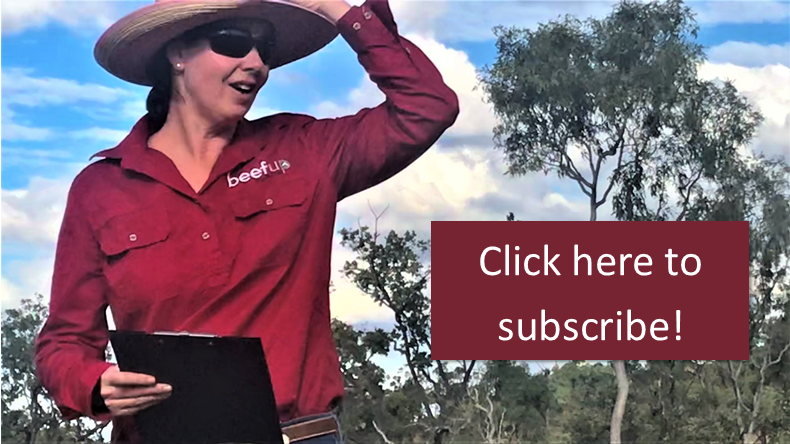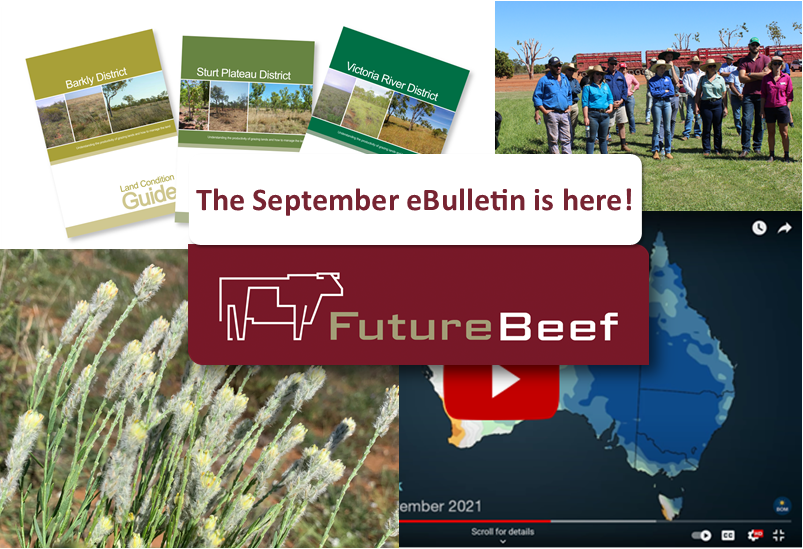September ebulletin is out now!
The latest beef and rangelands research findings for northern Australia
The September eBulletin features:
 The cost of vibriosis
The cost of vibriosis
The impact of vibriosis has been estimated to reduce a business’ gross margin by as much as 65% in the first year of infection in naïve herds. Furthermore, once established, can reduce a business’ gross margins by up to 36%, when compared to a vibriosis free herd (Dr Steven Hum, 2007). Read the who, what, why, where, when and how of vibriosis management in this article.
The new Carbon Neutral 2030 Grazier Network — Registrations are open!
Carbon farming and ecosystem service markets are constantly evolving, making it difficult to keep track of the latest offers, developments and opportunities. To overcome this issue, the From Method to Market project team have created the Carbon Neutral 2030 Grazier Network. Members of the Network will receive quarterly updates featuring the latest research findings, links to relevant and scientifically verified media articles and the opportunity to be involved in future research projects. Group members will be encouraged to share their experiences, ask questions and learn from each other’s experiences. Membership is open to all interested parties across Australia. Click here for more information.
Spring weather outlook from Bureau of Meteorology
The Bureau of Meteorology has released the spring Climate and Water Outlook. A negative Indian Ocean Dipole is predicted to persist through spring, creating wetter conditions in eastern and southern Australia. Only one out of seven weather models are predicting a La Niña for the coming wet season however, an early start to the wet season for Queensland and the Northern Territory are likely at this stage. Click here to watch the full video.
How many cattle can your country carry? — Has drought impacted your safe carrying capacity?
Widespread low rainfall in recent years have contributed to the death of Mitchell grass in some regions, prompting concern about the ability of the pastures to recover to their former productivity.
Paddocks that have suffered a decline in perennial grasses (such as Mitchell grass) don’t grow as much useful forage, meaning that not as many cattle can be carried throughout the year. Luckily, there are some great resources available to help assess land condition and how this affects pasture growth and safe stocking rates, such as the regional Land Condition Guides.
Irrigated fodder and pasture field walk in Broome
A large mix of Kimberley and Pilbara pastoralists, agribusinesses and consultants took the opportunity to be updated about irrigated pastures at a recent industry field walk. The Department of Primary Industries and Regional Development hosted the event at the Skuthorpe trial site, east of Broome. Senior Development Officer Chris Ham said, “One of the highlights included a comparison of maize varieties, including fertiliser requirements and pest monitoring and management, amongst many other of the observations we shared,” he said. Read more: Updates provided on irrigated pasture and fodder at field walk
Pimelea management survey — we need help!
Are you a primary producer affected by the toxic native plant, Pimelea?
University of Queensland researchers are looking for primary producers to participate in a short (15 minute) survey to better understand the impacts of Pimelea infestations in pastures, the conditions that favour its establishment, and the current management practices being adopted to control it. Already, PhD candidate Rashid Saleem, has been getting some interesting results. Survey results will be shared in an upcoming eBulletin. To complete the survey please click here.
Time to treat for ticks
Cattle ticks suck blood, slow growth and production, transmit disease and can ultimately lead to death. So how can northern producers play to win? Parasitologist and Managing Director of Dawbuts, Matt Playford, shares his top tips for tick season: Playing to win against cattle ticks.
Read it all: https://mailchi.mp/futurebeef/109
Never miss out ― Subscribe to the monthly eBulletin today: Click here
| Share |
|---|
